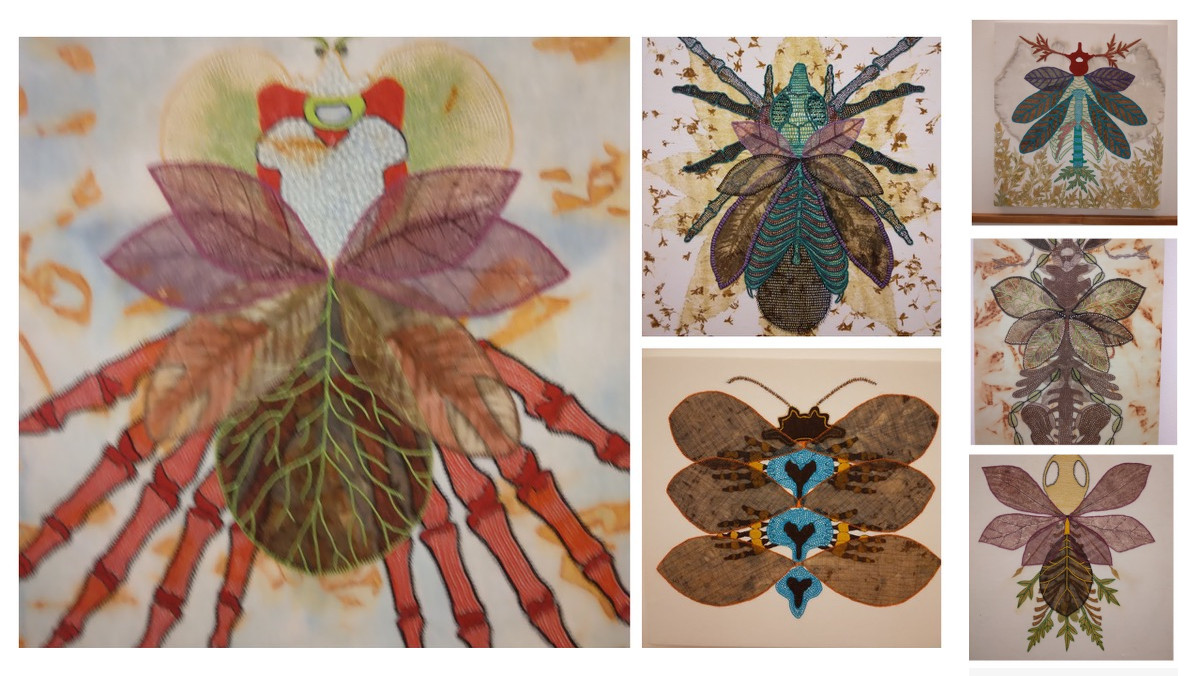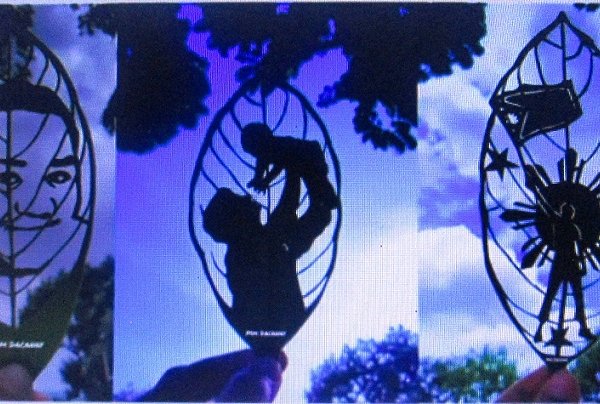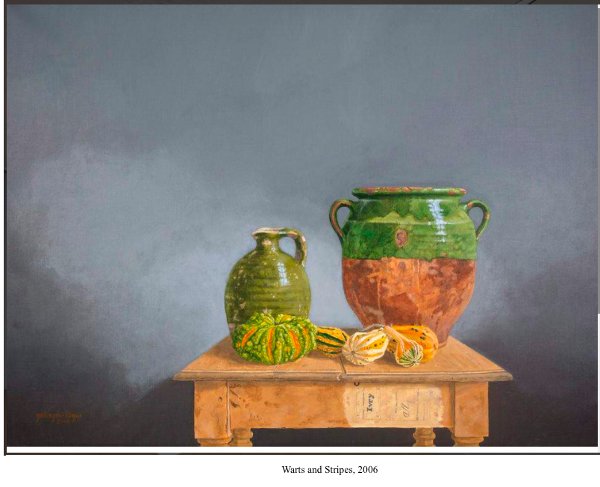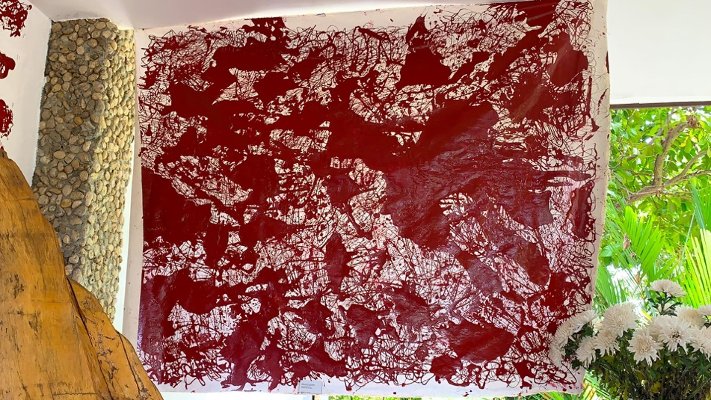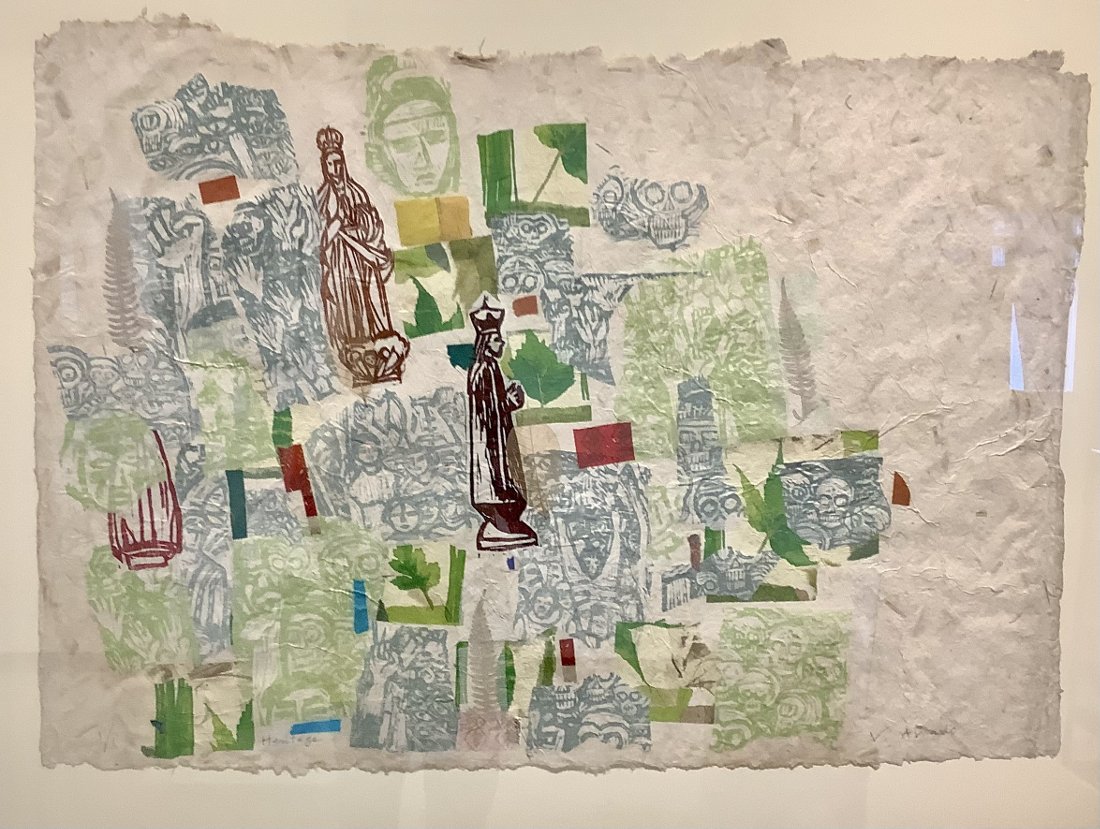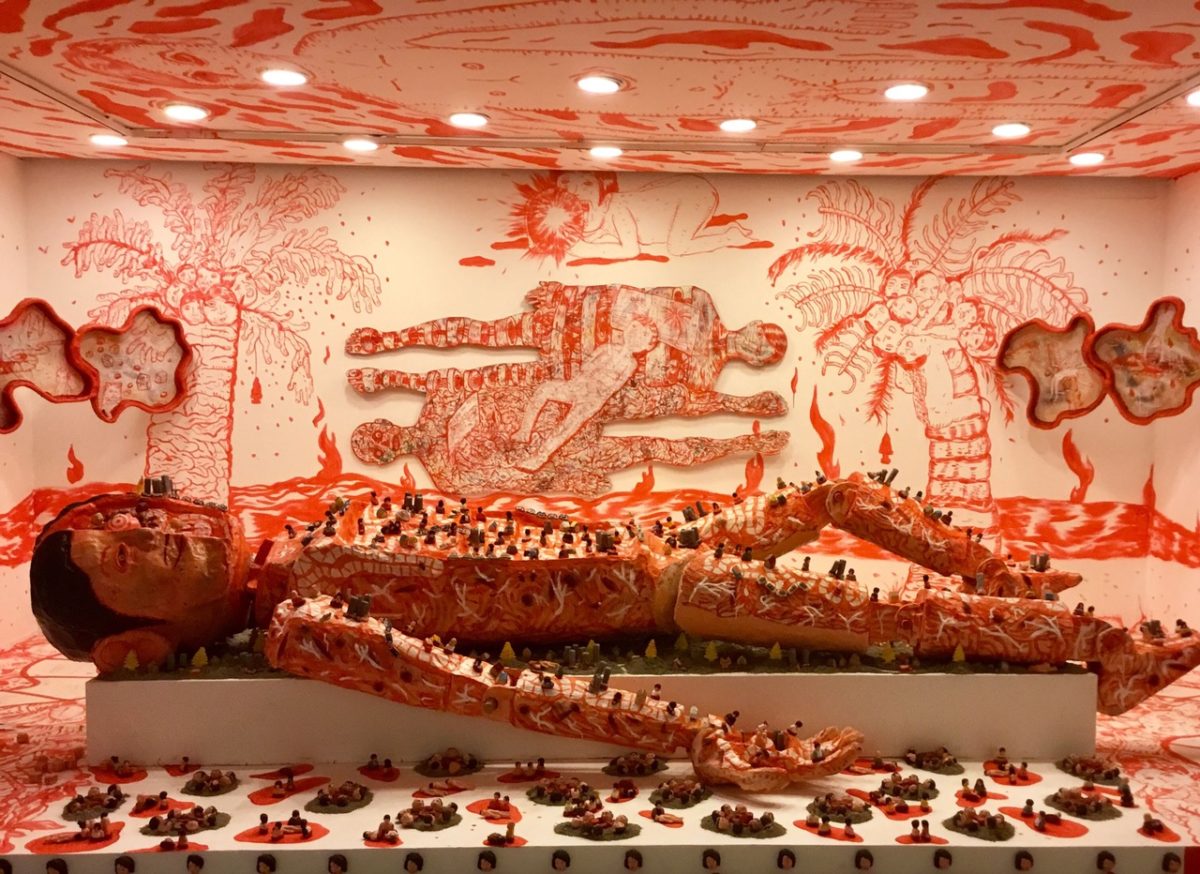Images courtesy of R.C. Ladrido and Silverlens Galleries
Geraldine Javier presents her works in an exhibit titled A Tree is Not a Forest at the Silverlens Galleries until December 20, 2023. It is her ode to nature and its complexity, informed by naturalists who fought for plants and animals to be known and respected, in vain.
The World Wildlife Fund Report of 2022 notes that global wildlife populations decreased drastically by 69% in the past 50 years, due to human activities, from deforestation to poaching to industrial pollution.
Amidst climate change and the loss of biodiversity, we are in the middle of the sixth great extinction (the fifth one got rid of the dinosaurs). Two million species are at risk of extinction including insects that “pollinate crops, recycle nutrients into soil, and decompose waste.” Without insects, the planet will not be able to survive.
Portraits of Four Important Naturalists: Javier pays homage to four naturalists with their portraits made in acrylic and encaustic canvass, gold powder, and etching with a needle. Goodall’s is a fabric work with embroidery, appliqué, and ecoprinting.
David Attenborough (1926): With over 40 animals and plant species named after him, he is best known for his BBC natural history documentary series. Javier surrounds Attenborough with seven species named after him
Maria Sibylla Merian (1647-1717): a German-born naturalist and nature artist best known for her illustrations of insects and plants. Her portrait includes her superb scientific illustrations.
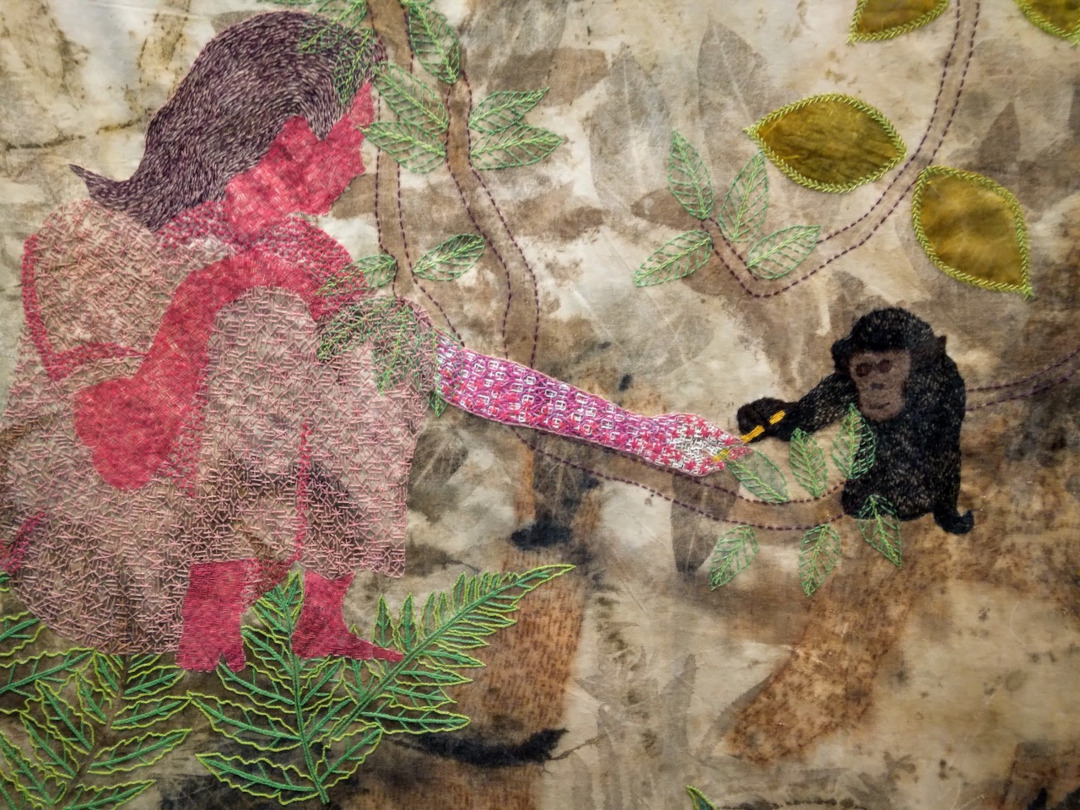
Jane Goodall (1934): British ethologist known for her study of animal behaviour, especially the chimpanzees of Gombe Stream National Park of Tanzania. Three figures of Goodall are portrayed, all interacting with chimpanzees.
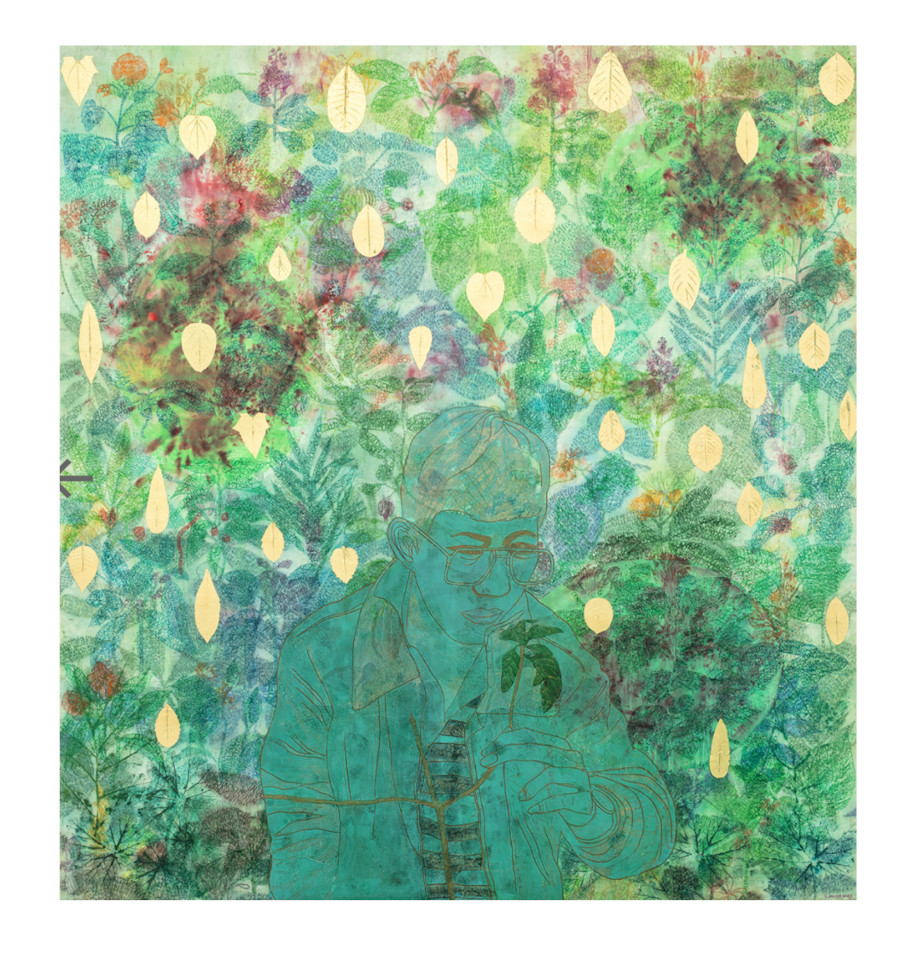
Leonard Co (1953-2010): The late Filipino field botanist and plant taxonomist, and the foremost authority in ethnobotany or how local people interact with indigenous plants in their area that is embodied in his book, “Common Medicinal Plants of the Cordillera.” Shot and killed by the Philippine Army while doing fieldwork in Leyte, Co had started an ambitious project, an overview of all indigenous plants of the Philippines, now known as the Digital Flora of the Philippines, powered by social media and citizen science.
What’s in a Name? The fabric works are embroidered with scientific names of local plants. Javier also explores ecoprinting for the first time, a type of natural dyeing where the colors, shapes, and details of leaves and flowers are transferred onto fabric or paper.
Life Cycle Series and Humans as Predators: In a life cycle, death is not the ultimate end; after death, organic remains return to an ecosystem that supports new life, says Javier. We all return to the soil, a cycle of life and death hastened by environmental destruction, as embodied in Life Cycle II.
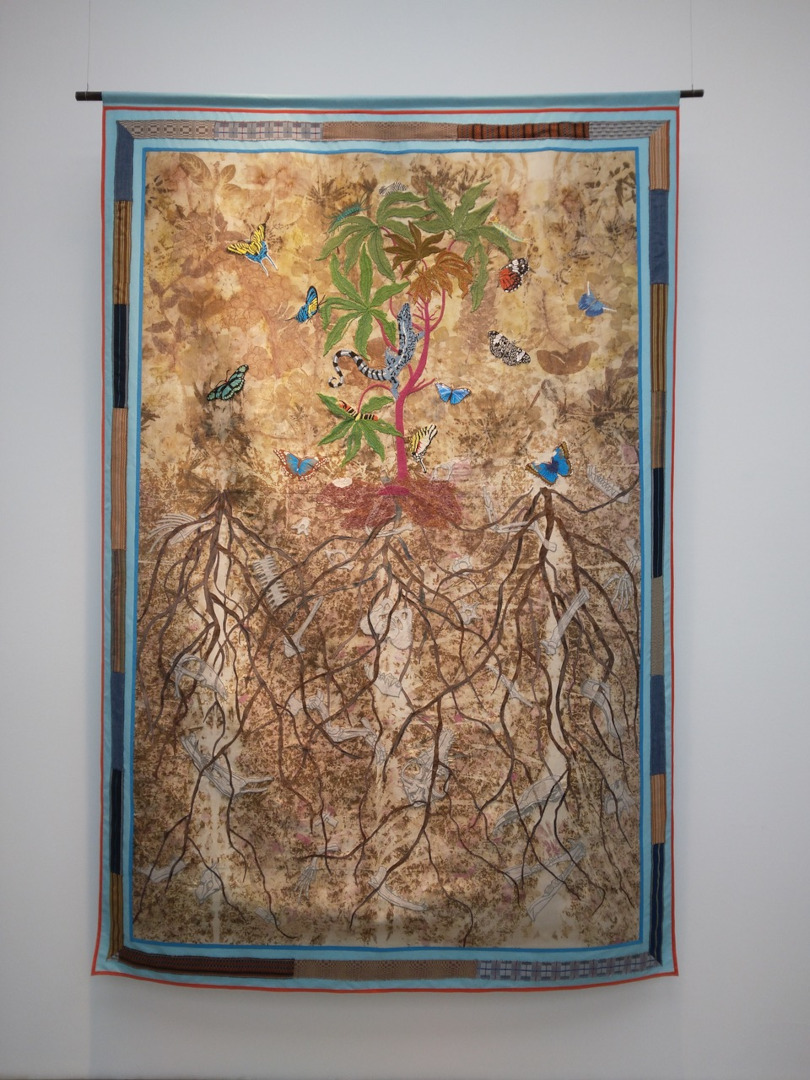
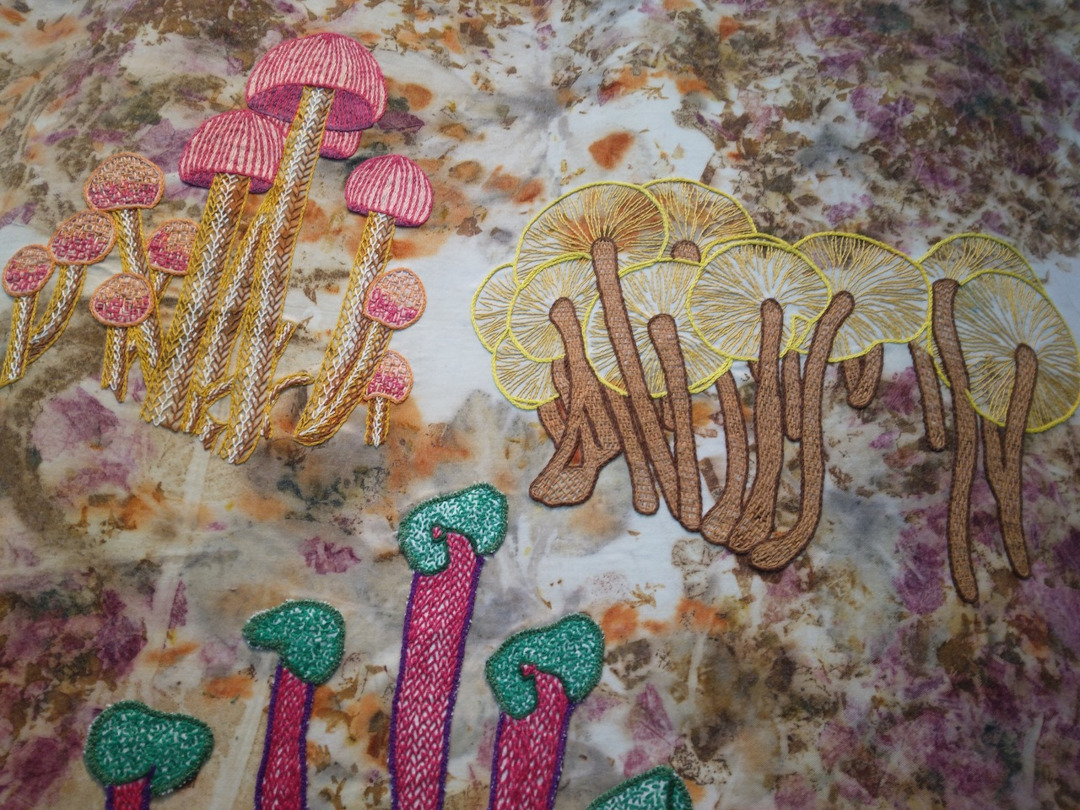
Fabric works include appliques of intricate embroideries of skeleton figures or its parts, and ecoprints of dried leaves and vegetation. Trained as a nurse before becoming an artist, Javier’s interest in human anatomy has continued in her artmaking. The skeletons are surrounded with appliques of colorful mushrooms, root systems, and the elephant foot yam that used to grow in Javier’s backyard.
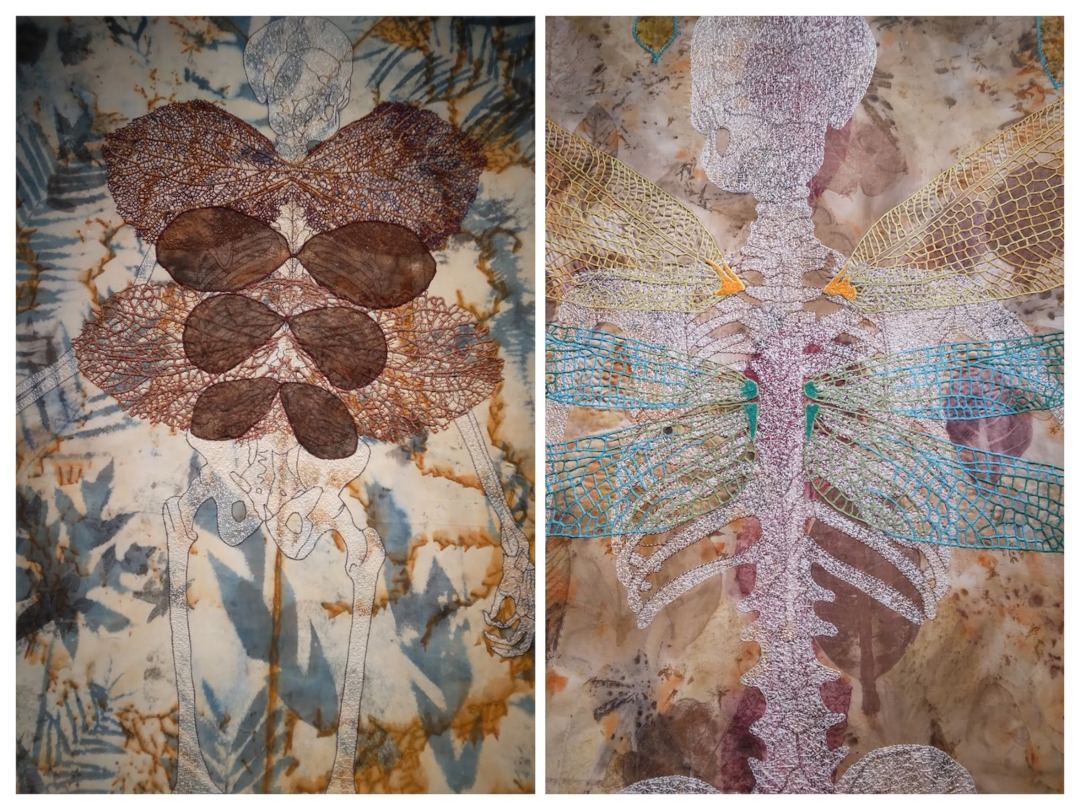
In Human as Predators, two fabric works of hybrid creatures entitled Terminator 1 and Terminator 2 with human skeletons embroidered with wings: one with dragonfly wings to represent the dragonfly as an apex predator; the other, with skeletonized leaves attached as wings.
A 24-piece textile installation, dyed in indigo, rust, and chlorinated, features images of our endangered animals (tamaraw, eagle, crocodile, forest turtle, peacock, tarsier, Visayan warty pig, and shrew rats) in cyanotype that produces blues and whites.
New Species in an Anthropocene Era
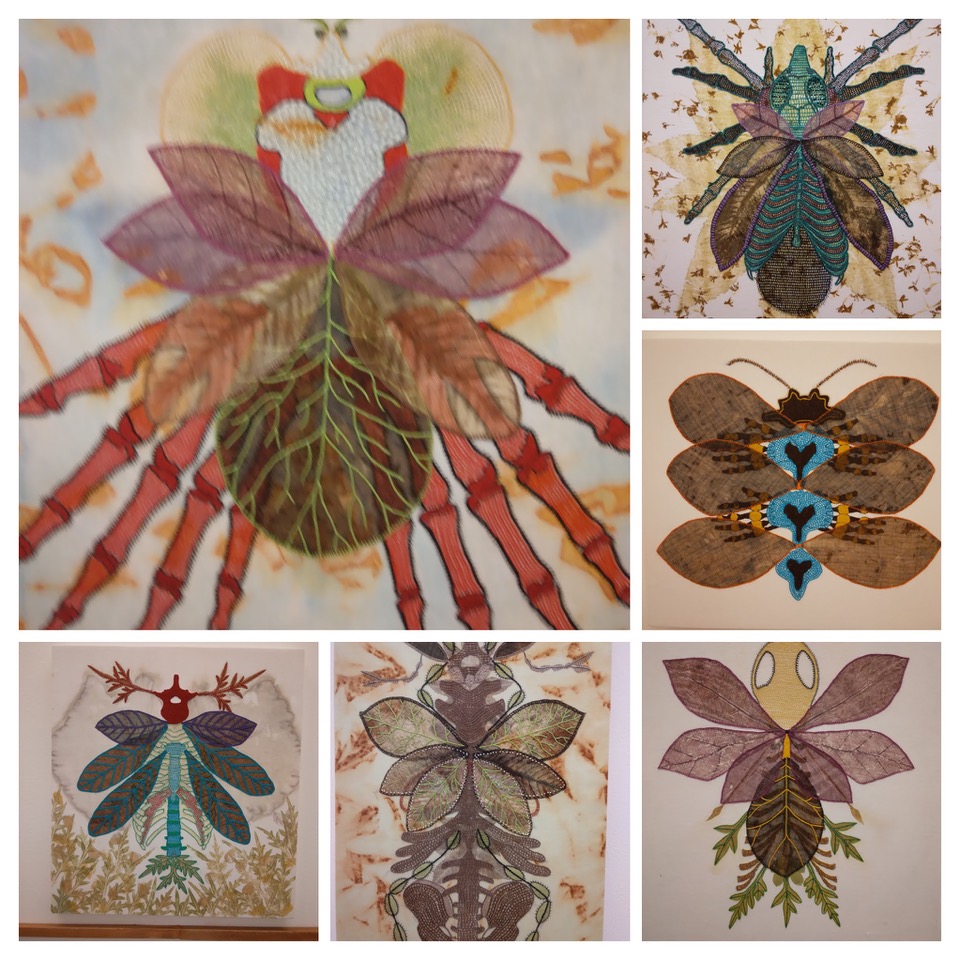
Creatures of the Anthropocene are all fictional works on paper, created by whimsical imagination. With the ongoing environmental destruction, how will life forms evolve? Or rather, will there be any life at all?
Overall, the gossamer beauty of the very tactile works in A Tree is Not a Forest contrasts directly with climate chaos everywhere and the massive loss and destruction of species, as we know it.
The artist
A nursing and fine arts graduate from the University of the Philippines Diliman, Geraldine Javier (b.1970) has had more than 30 solo exhibitions in the Philippines, Malaysia, South Korea, Singapore, Germany, and China.
Her early works were in collage form, oil, and acrylic paintings on the themes of death, melancholy, and childhood. In 2008, she started incorporating fabric works into her paintings and installations. Moving from Manila to Cuenca, Batangas in 2013 in search of quietude, she started an organic farm. She has also organized a group of women in the area for embroidery and textile works, as part of helping their livelihood.
For the women who toiled doing tedious embroidery, it would be nice to know if they ever got to see this exhibition, their work as much as the artist’s.
In 2012, Javier received the Singapore Tyler Print Institute Residency. She was a recipient of the Inaugural Ateneo Art Awards (2004) and the Thirteen Arts Award (2003) of the Cultural Center of the Philippines.
